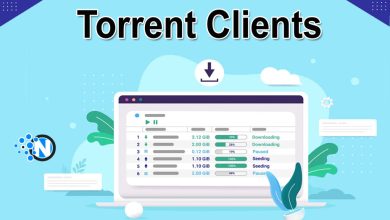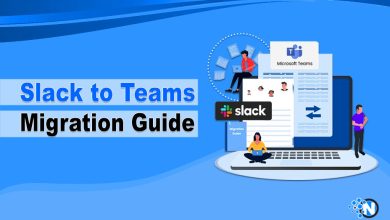What is CMMS Software and How Does It Work?
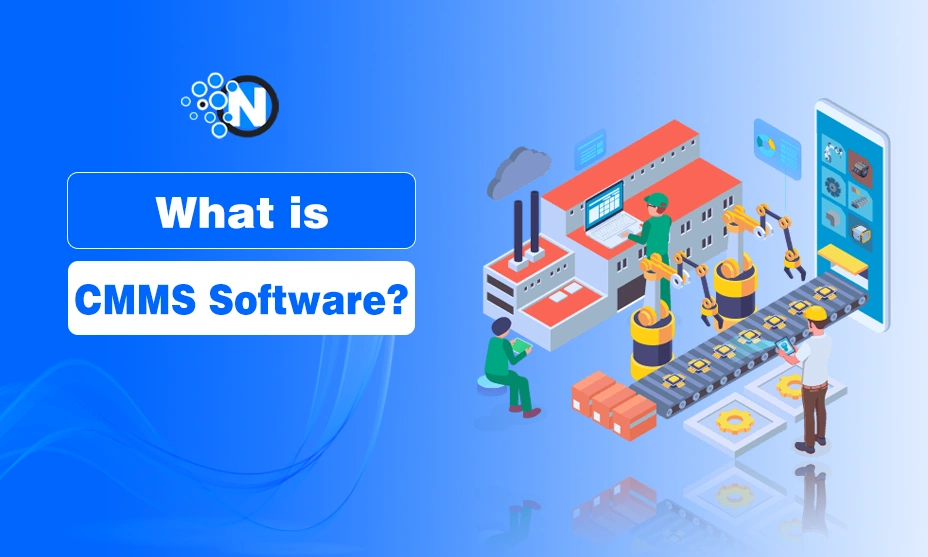
Ever wondered how large facilities keep their machines running smoothly without constant breakdowns or chaos? That’s where CMMS software comes in. I have even worked with many tools in the maintenance world, and I can tell you, a good CMMS can change everything.
It streamlines maintenance tasks, improves asset longevity, and boosts overall productivity. Whether you are running a factory, a hospital, or a university, understanding how a CMMS works can make your job a whole lot easier.
So, let’s walk through what CMMS is, how it operates, and why it is such a game-changer.
What is CMMS Software?
CMMS stands for Computerized Maintenance Management System.
At its core, it is a software solution designed to help organizations plan, track, measure, and optimize maintenance operations. I like to think of it as a digital command center where you manage work orders, schedule preventive maintenance, monitor asset performance, and store key maintenance data.
If you are dealing with equipment, buildings, vehicles, or infrastructure, a CMMS helps you stay organized and proactive instead of reactive. No more scrambling when something breaks. You have got everything logged, scheduled, and tracked.
What Does CMMS Software Do?
To really understand CMMS software functions, we need to break it down into its core components. Each part plays a role in making maintenance smoother, faster, and more reliable.
Below, I will walk you through the main features that make up a CMMS and explain how they work together.
1. Asset Management
This is the heart of any CMMS. Asset management lets you track every physical item under your care. Think HVAC units, conveyor belts, trucks, or even entire buildings.
What it does?
- Stores detailed records of each asset (like model numbers, warranties, and manuals)
- Tracks maintenance history
- Sets up preventive maintenance plans
- Helps you monitor asset performance over time
If you have ever lost a manual or forgotten the last time a piece of equipment was serviced, this feature alone can save you countless hours.
2. Work Order Management
Once your assets are logged in, you need a way to manage tasks. That’s where work orders come in.
What it does?
- Creates, assigns, and prioritizes maintenance tasks
- Tracks who completed the job and how long it took
- Logs materials used and costs involved
- Provides status updates in real-time
I love how this keeps everyone on the same page. Whether you’re managing a team of five or fifty, you’ll know what’s been done and what’s pending.
3. Preventive Maintenance Scheduling
Instead of waiting for things to break, a CMMS lets you schedule routine checks to avoid costly downtime.
What it does?
- Automates recurring maintenance tasks
- Sends reminders and notifications
- Helps extend equipment lifespan
- Reduces emergency repairs
Trust me, this alone can pay for the entire software. Fewer breakdowns mean fewer headaches and more money saved.
4. Inventory and Spare Parts Tracking
Missing parts can delay repairs and frustrate everyone involved. A good CMMS makes sure you always have what you need.
What it does?
- Monitors inventory levels
- Tracks usage rates of spare parts
- Sends low stock alerts
- Connects parts to specific assets
No more running around searching for a filter or valve. Everything’s tracked and accounted for.
5 – Reporting and Analytics
You can’t improve what you don’t measure. CMMS software gives you insights into how well your maintenance team is performing.
What it does?
- Generates custom reports on costs, downtime, and response time
- Tracks key performance indicators (KPIs)
- Helps identify patterns and recurring issues
- Supports data-driven decision making
I have seen facilities reduce maintenance costs by 20% or more just by using the data provided by their CMMS.
6 – Mobile Access and Cloud Integration
Today’s CMMS platforms often offer mobile apps and cloud access, which means your team can update tasks right from the field.
What it does?
- Lets technicians close work orders on the spot
- Uploads photos and notes in real-time
- Provides instant access to manuals and asset history
- Works on phones and tablets
This makes life easier for everyone and ensures accurate, real-time data across the board.
How Does CMMS Software Work? A Guide
Now, as you have learned what does CMMS software can do, I am going to explain how it works and how you can use it to carry out the maintenance tasks.
In the guide below, I am going to use Zoidii CMMS software as an example to deliver practical insights to you.
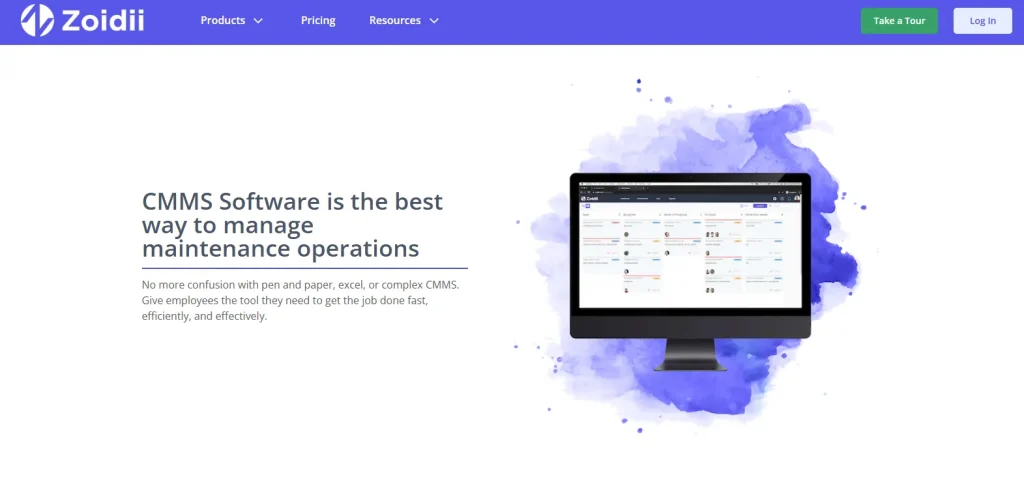
How to Set Up Zoidii CMMS Software?
In the under section, I have detailed how to set up Zoidii CMMS software before using it for maintenance purposes.
- Open your updated browser and clear its cookies and caches after updating it to the latest version.
- Enter Zoidii CMMS Software Sign Up in the search bar and press Enter.
- On the results pages, you have to click on the official sign up page of Zoidii CMMS software.
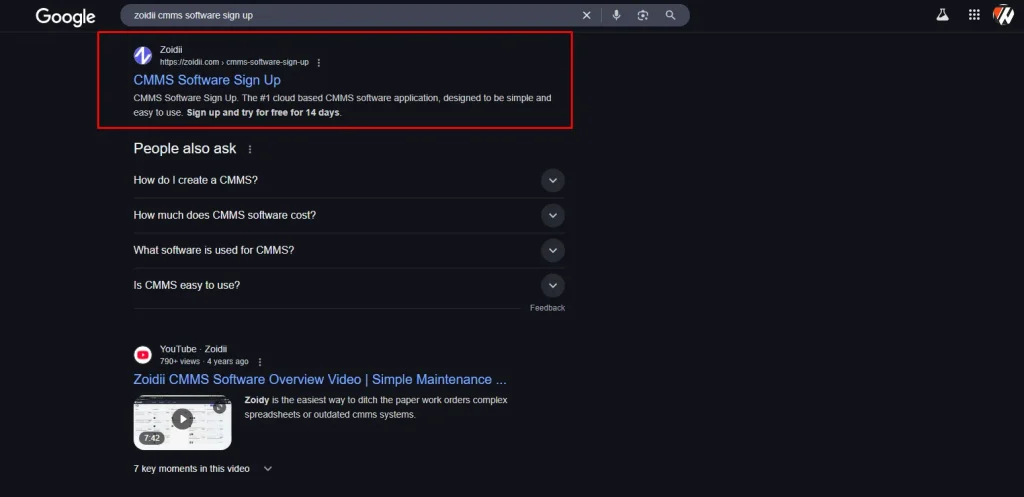
- Enter your credentials, including Full Name, Company Name, Email Address, and Phone Number. Then, click the “Dive into Zoidii” button.
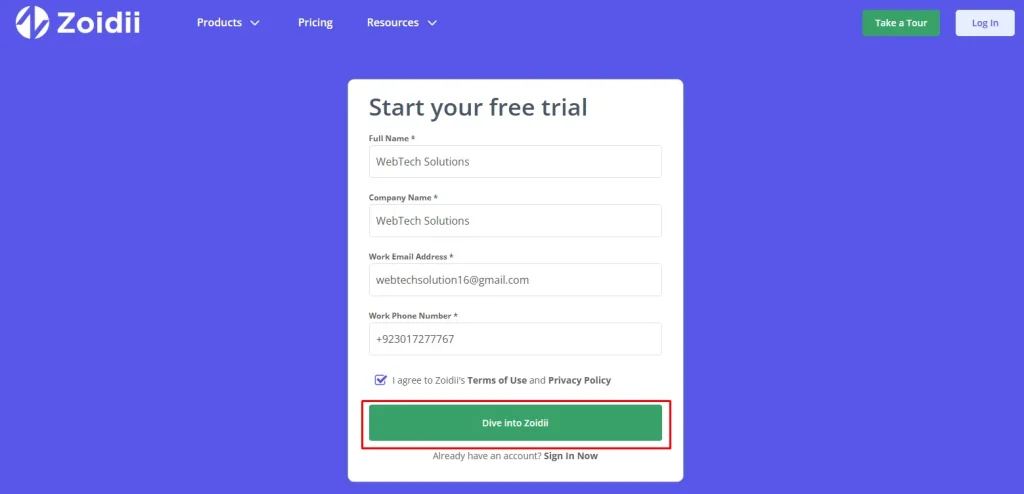
- Next, you should watch the introduction video to understand the working of this software and click Next.
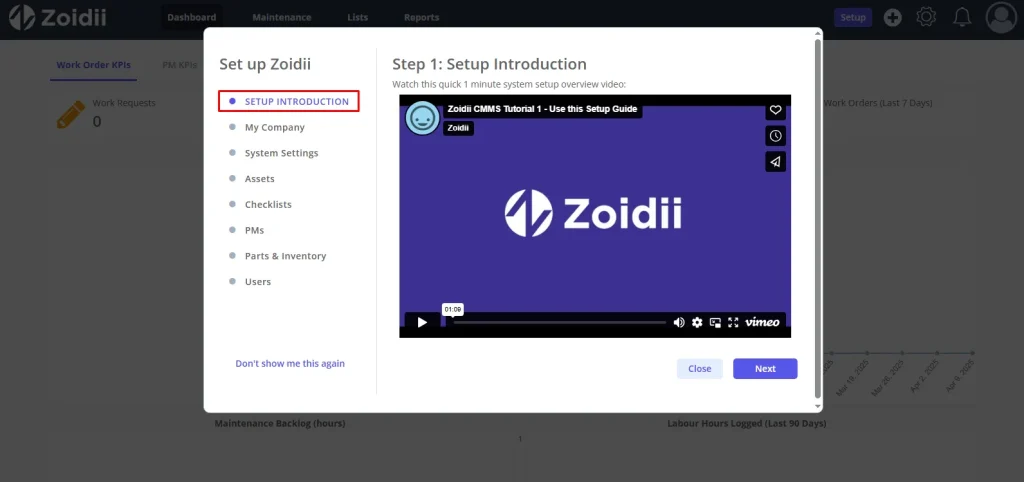
- The next window will ask you to finish the company setup by adding details. Then, press the next button and then close.
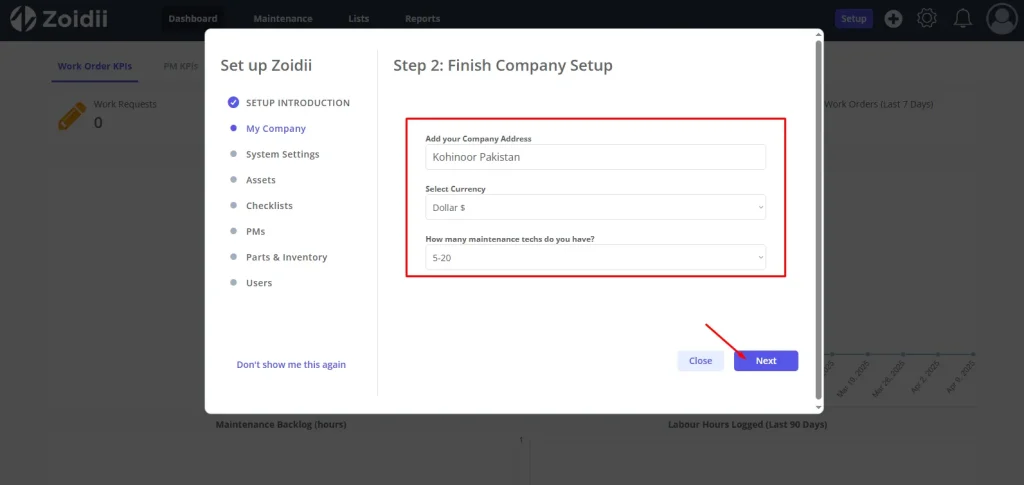
- On the homepage, click the Settings Icon.
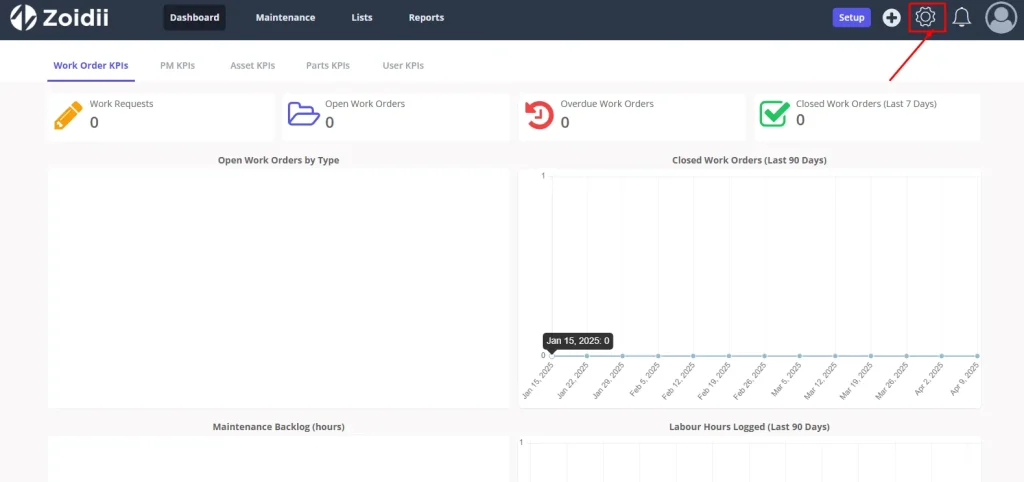
- Choose System Settings from the dropdown menu.

- On the next window, you will see multiple management options, which you can go through one by one.
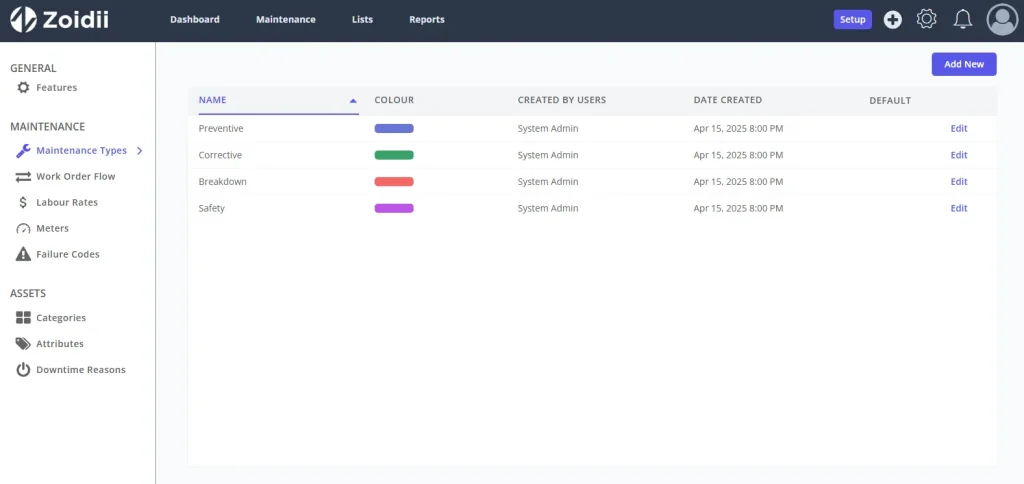
- You can add new commands as well as edit the existing ones.
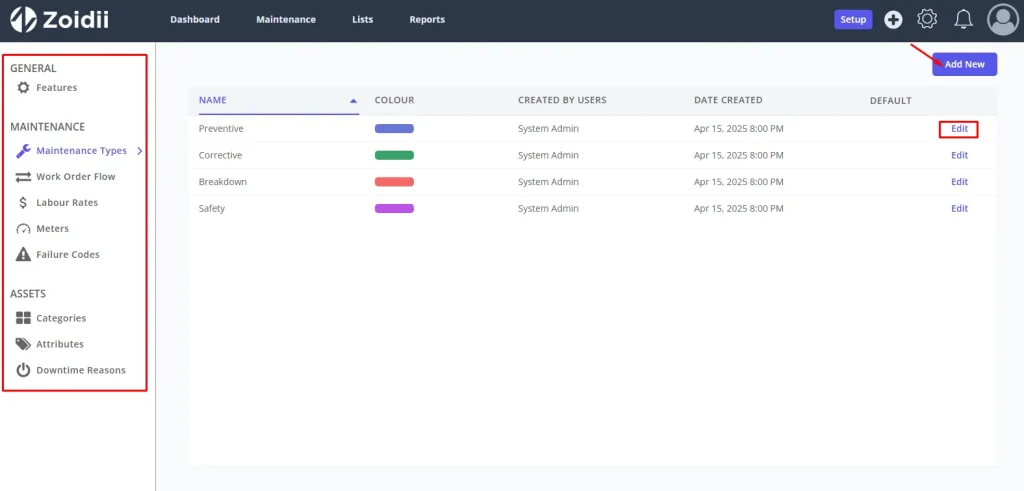
- Now, click the Dashboard option from the top menu.

- The Dashboard allows you to see and measure different KPIs.
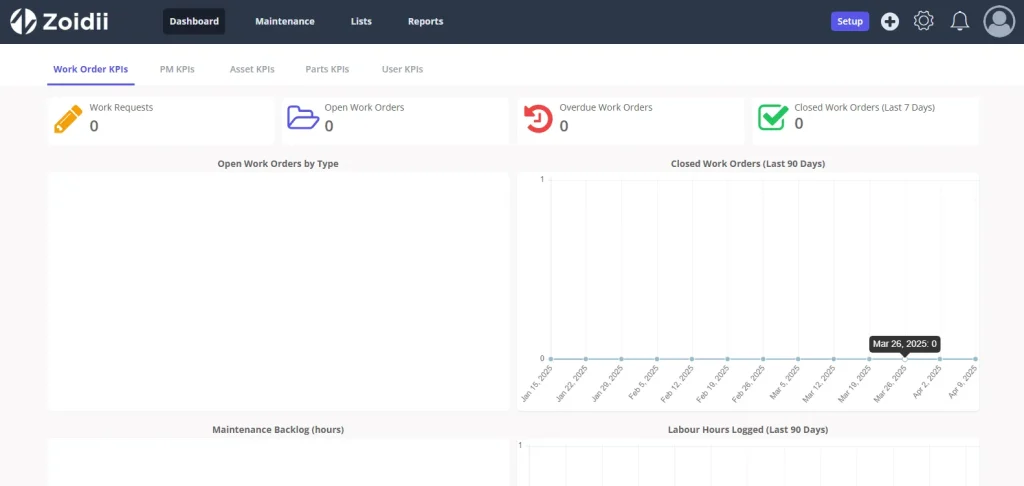
Use CMMS Software for Maintenance Purposes
The steps mentioned above will help you set up the Zoidii CMMS Software. Now, I am going to elaborate on how to use it for maintenance purposes.
- On the dashboard, click on the Maintenance option.
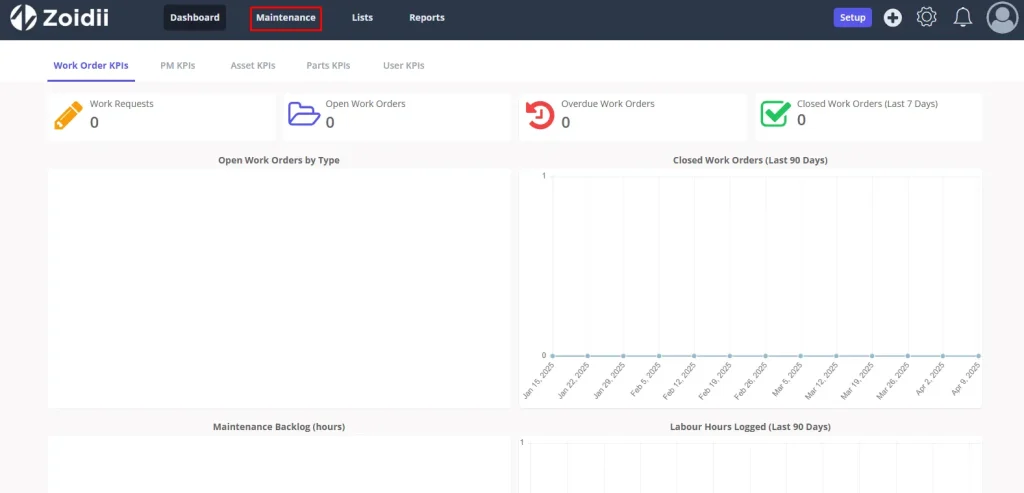
- Choose Work Orders from the dropdown options.
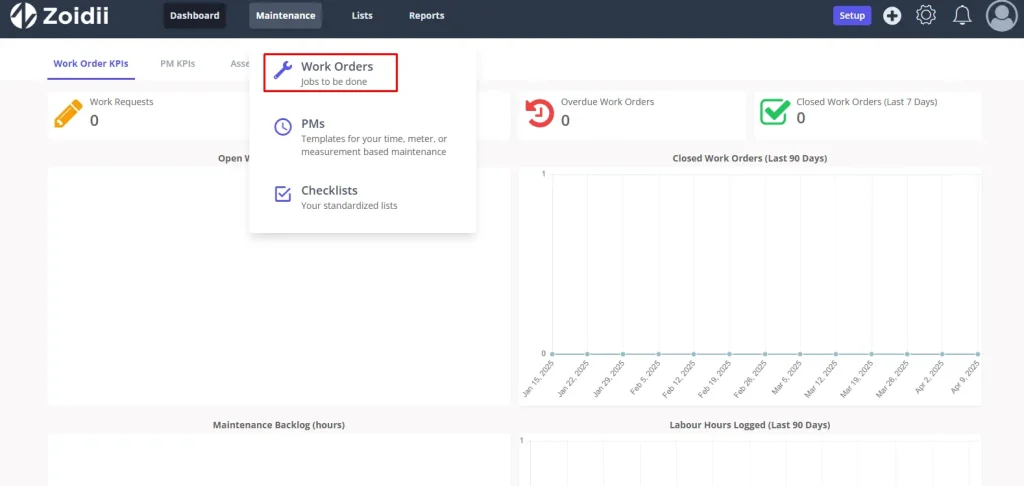
- Now, click on the Add New button.
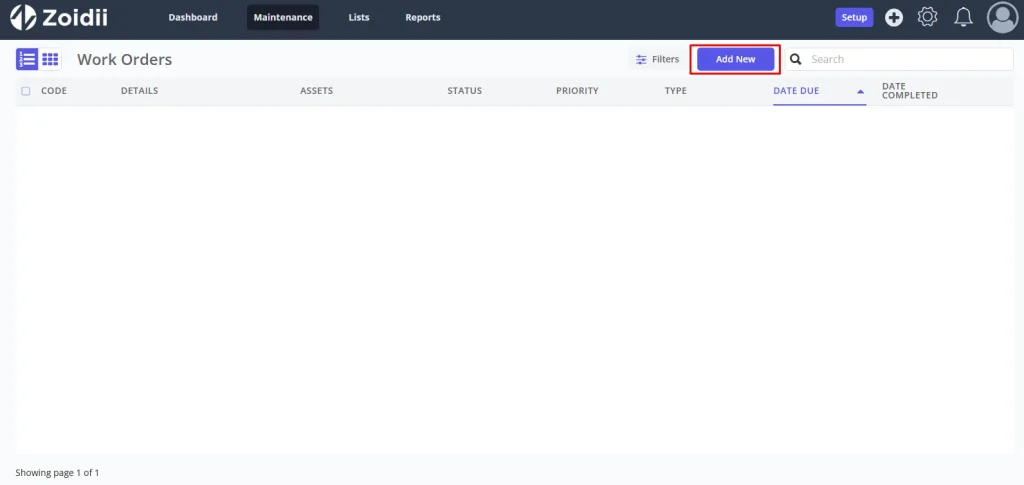
- Add the information regarding the Assets, details of the task, type, priority, assigned to user, due date, and estimated time.
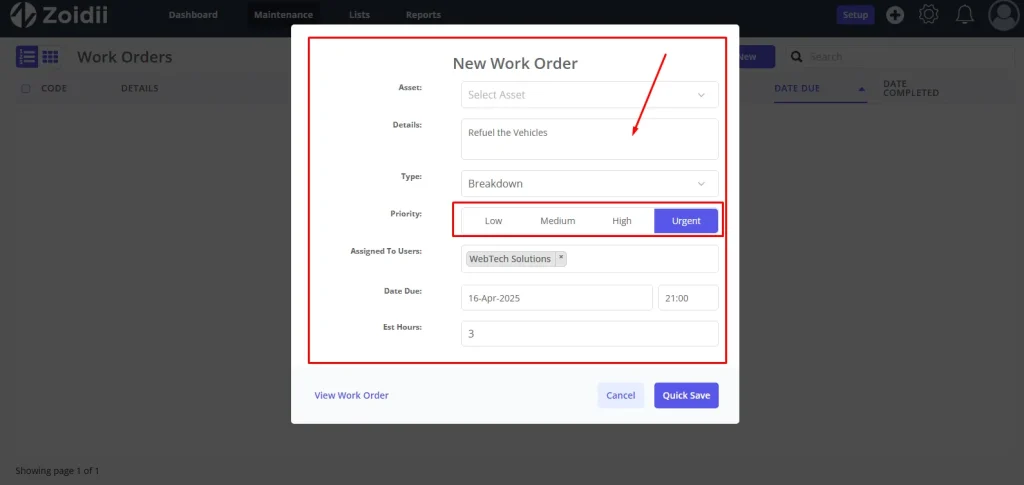
- Next, click the Quick Save option to add this work order.
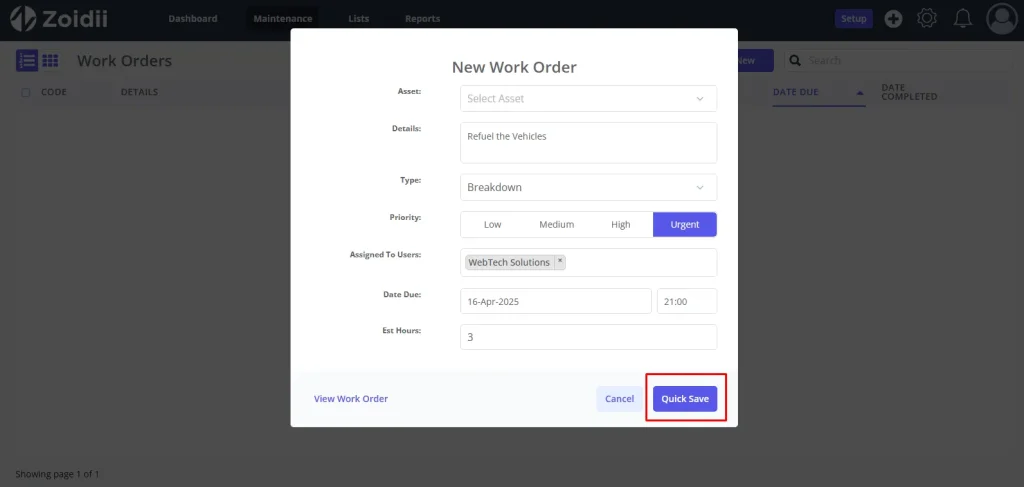
- Now, again, go to the Maintenance and Work Order section to see the work orders.

- You can click on the tasks to see the progress.
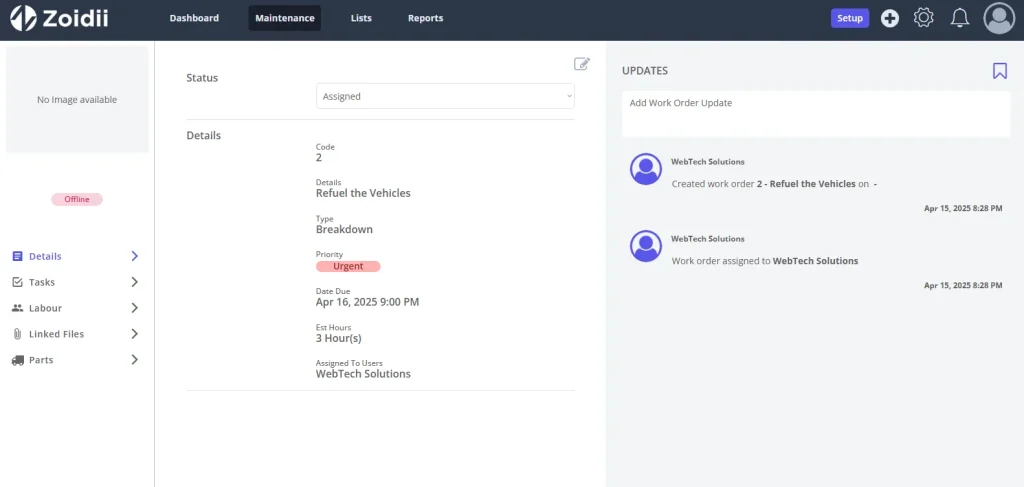
These are the details on how CMMS software works to make sure you can pocket all of its benefits and reduce your maintenance costs.
Benefits of Using a CMMS
Now that you know how it works, let me tell you why so many organizations swear by CMMS software. Below are the main benefits I have personally seen.
- Improves Equipment Reliability: With scheduled maintenance and real-time tracking, your equipment runs better and lasts longer.
- Reduces Downtime: Because you are proactive, you avoid surprise breakdowns and keep operations flowing smoothly.
- Saves Time and Labor: Technicians spend less time hunting down information or parts and more time doing the actual work.
- Enhances Compliance and Safety: CMMS helps you meet industry regulations by keeping accurate records and ensuring timely inspections.
- Cuts Maintenance Costs: Less emergency repair, fewer replacements, and better planning equals serious cost savings.
Who Needs CMMS Software?
Honestly, if you manage physical assets, you can benefit from a CMMS. Here are some industries that use it heavily:
- Manufacturing plants
- Healthcare facilities
- Schools and universities
- Property management firms
- Municipal services
- Hospitality and hotels
Even small operations can see big gains. You don’t need to be a mega-corporation to benefit from organized maintenance.
Final Thoughts
So now you know what CMMS software is and how it works. It is more than just a digital calendar or task list. It is a full-blown command center for maintenance that can save time, money, and frustration.
Whether you are a facility manager, a maintenance technician, or a business owner, investing in a solid CMMS can streamline operations and make your life a whole lot easier.
I have seen it transform teams and workflows from the ground up. If you are still running maintenance on spreadsheets or sticky notes, this might just be the upgrade you need.



